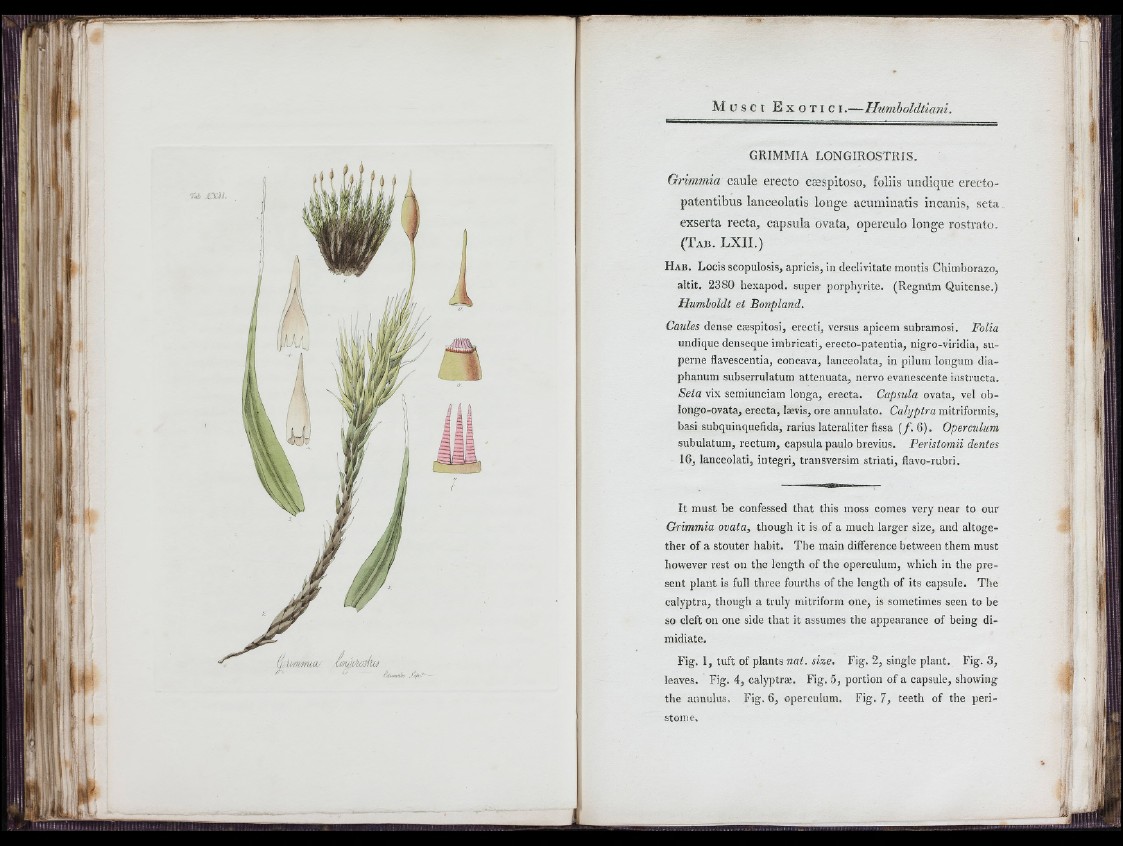
/ t e j í
■r«¿ .ixíi
i i Ummu: intii/ujfU á
te '••' i:/wat^ j ’tf
GRIMMIA LONGIROSTRIS.
Grimmia caule erecto cæspitoso, foliis undique erecto-
patentibus lanceolatis longe acuminatis incanis, seta
exserta recta, capsula ovata, operculo longe rostrato.
(Tab. LXII.)
H a b . Locis scopulosis, apricis, in declivitate montis Chimborazo,
altit. 2380 hexapod, super porphyrite. (Regnúm Quítense.)
Humholdt et Bonpland.
Caules dense cæspitosi, erecti, versus apicem subramosi. Folia
undique denseque imbricati, erecto-patentia, nigro-viridia, superne
flavescentia, concava, lanceolata, in pilum longum dia-
phanum subserrulatum attenuata, nervo evanescente instructa.
Seta vix semiunciam longa, erecta. Capsula ovata, vel oblongo
ovata, erecta, lævis, ore annulato. Calyptra mitriformis,
basi subquinquefida, rarius lateraliter fissa ( / . 6). Operculum
subulatum, rectum, capsula paulo brevius. Peristomii dentes
16, lanceolati, integri, transversim striati, flavo-rubri.
It must be confessed that this moss comes very near to our
Grimmia ovata, though it is of a much larger size, and altogether
of a stouter habit. The main difference between them must
however rest on the length of the operculum, which in the present
plant is full three fourths of the length of its capsule. The
calvptra, though a truly mitriform one, is sometimes seen to be
so cleft on one side that it assumes the appearance of being dimidiate.
Fig. 1, tuft of plants nat. size. Fig. 2, single plant. Fig. 3,
leaves. Fig. 4, calyptrae. Fig. 5, portion of a capsule, showing
the annulus. Fig. 6, operculum. Fig. 7, teeth of the peristome.
t e
k i r
J H
7 ■ «I
fl
h